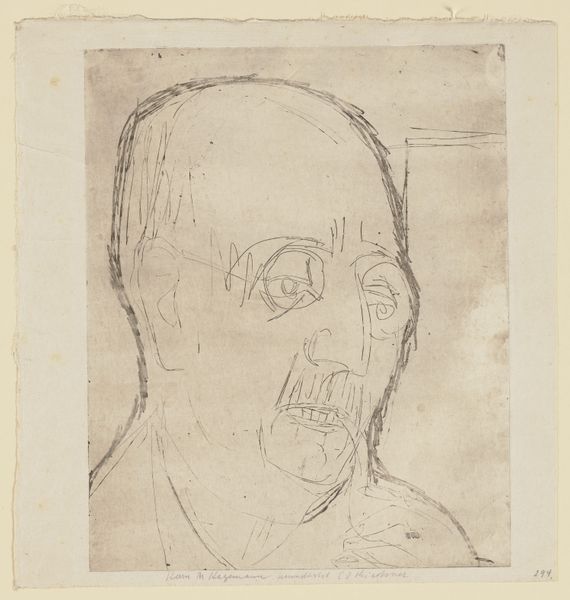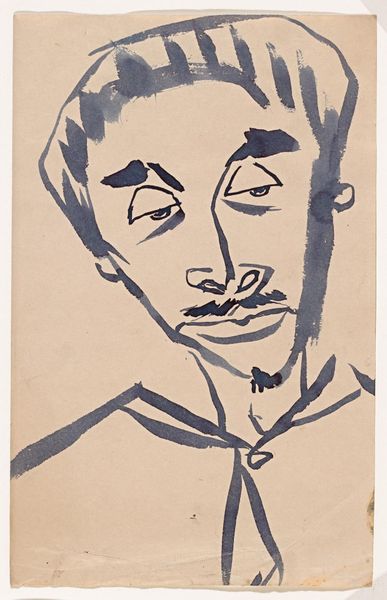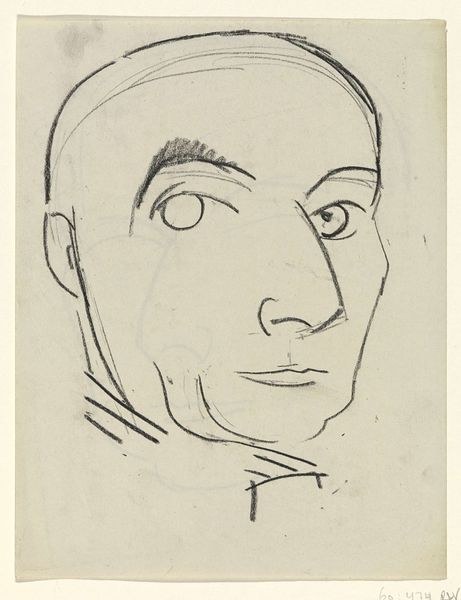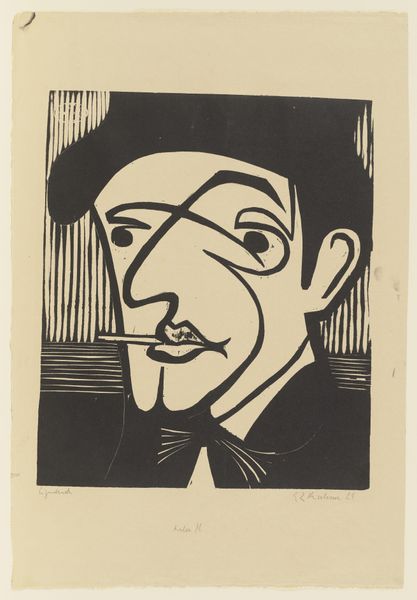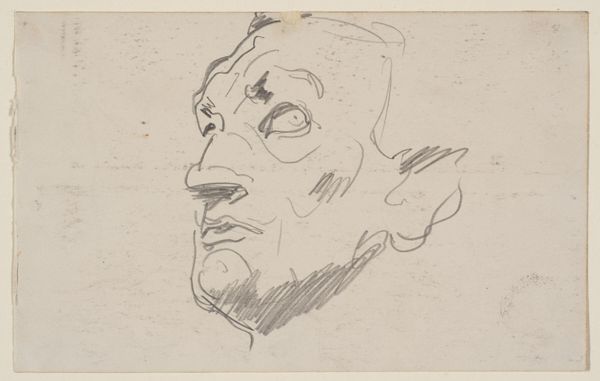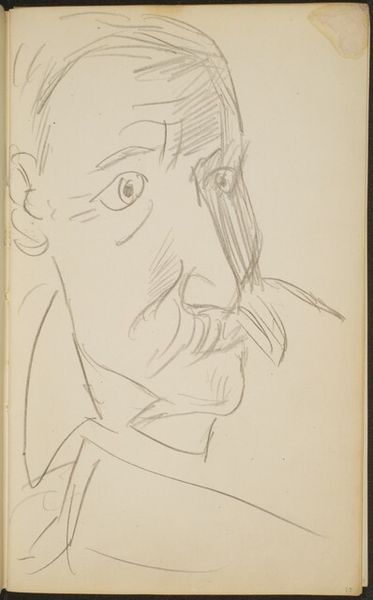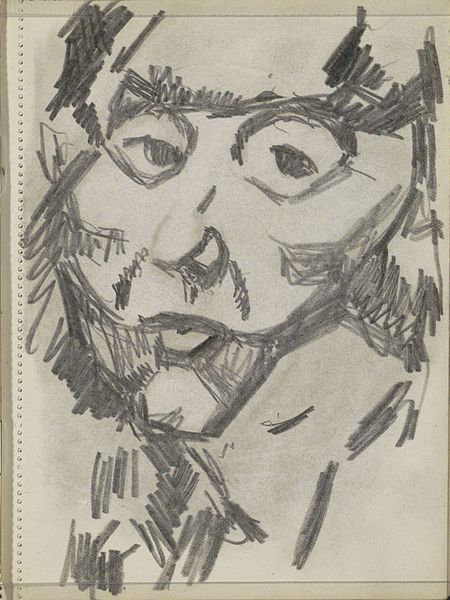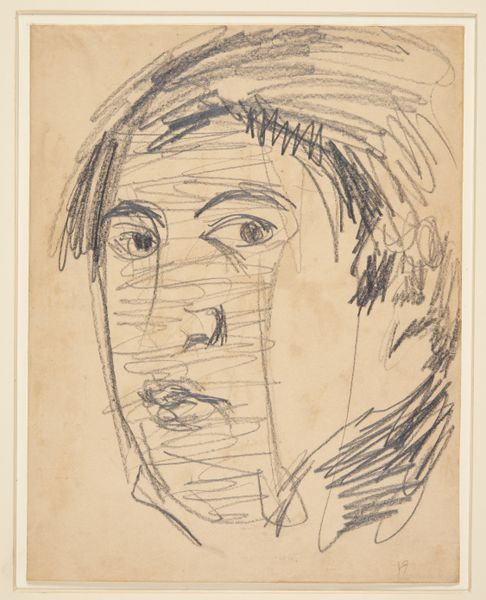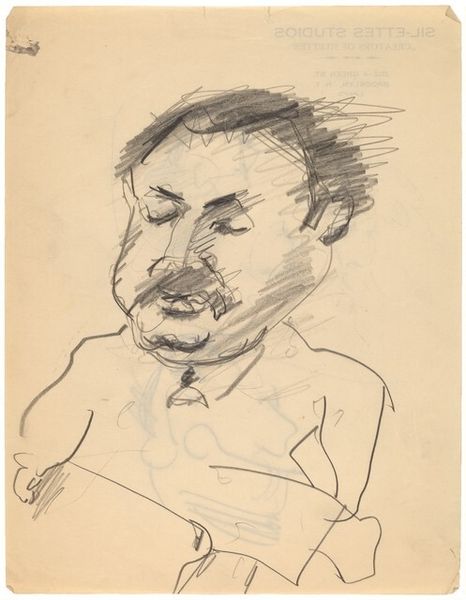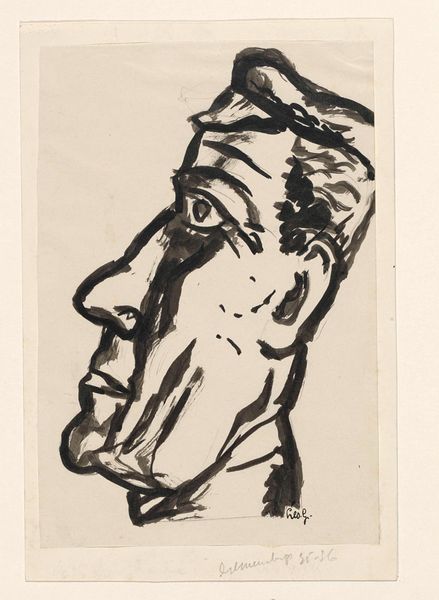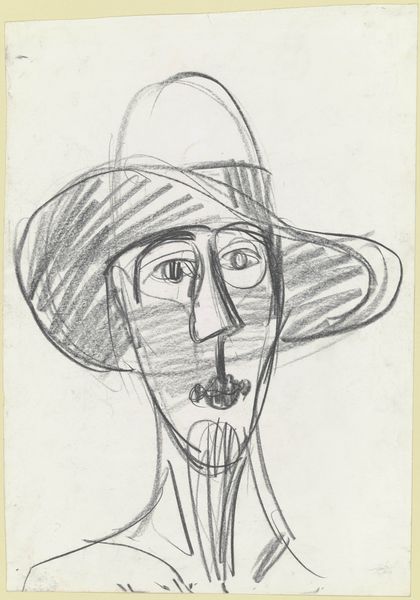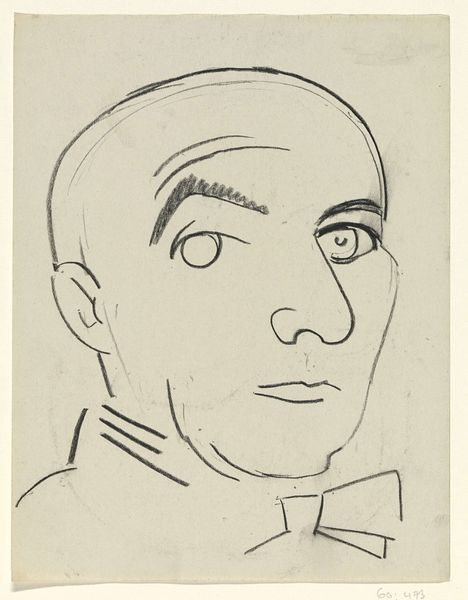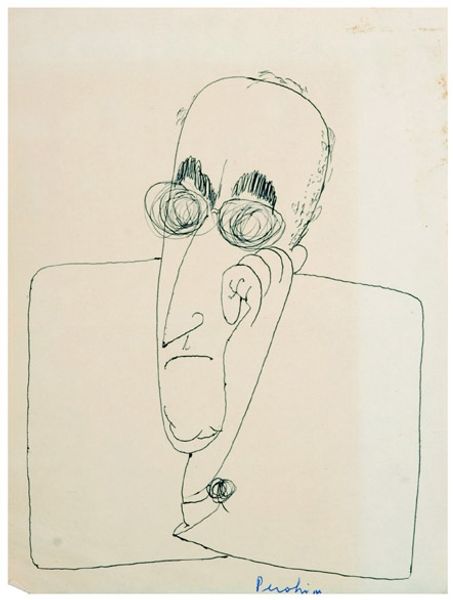
Kopf Ugi Battenbergs als Grimasse mit großen runden Augen c. 1916 - 1917
0:00
0:00
drawing, paper, chalk, charcoal
#
portrait
#
17_20th-century
#
drawing
#
self-portrait
#
pen sketch
#
figuration
#
paper
#
personal sketchbook
#
expressionism
#
chalk
#
sketchbook drawing
#
charcoal
Copyright: Public Domain
Editor: We’re looking at “Kopf Ugi Battenbergs als Grimasse mit grossen runden Augen,” or “Head of Ugi Battenberg as a grimace with large round eyes,” a charcoal drawing by Max Beckmann, likely created around 1916-1917. It's... intense. Those eyes are so big and bulging. How would you interpret this piece? Curator: It's tempting to see this as a purely personal expression, but we need to understand its place within a specific historical context. Consider the First World War raging at this time. Beckmann, serving as a medical orderly, was deeply affected by the trauma he witnessed. Could this drawing be less about a specific individual and more about the psychological impact of war on the artist himself and, by extension, German society? Editor: So you’re seeing it as a representation of the societal trauma being experienced at the time? Does that fit within the Expressionist movement generally? Curator: Precisely. Expressionism sought to convey inner emotions and experiences rather than objective reality. Furthermore, consider the institutional spaces where art was exhibited at this time. Galleries were increasingly exhibiting works that directly addressed the realities of war, though often in a very controlled or even propagandistic way. This raw, almost grotesque image pushes against those curated narratives. How do you see it in terms of a self-portrait? Editor: Knowing what you've said makes me consider it as Beckmann exploring how his image of himself, and perhaps humanity in general, had been impacted by these global conflicts. Curator: Indeed. The self-portrait then, becomes less a reflection of the artist's physical appearance, and more a reflection of the war-torn psyche of the nation. Editor: This completely changes my initial reading of the work, moving it from personal expression to broader social commentary. Curator: And that’s the beauty of historical context. It invites us to look beyond the surface and consider the powerful forces shaping artistic production.
Comments
No comments
Be the first to comment and join the conversation on the ultimate creative platform.
